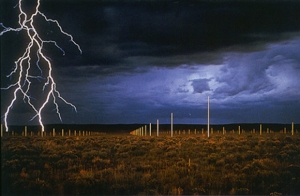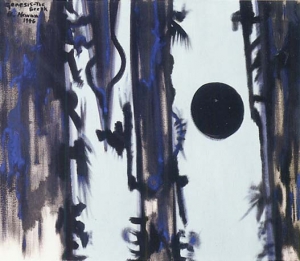|
Displaying items by tag: John Chamberlain
Inverleith House, Edinburgh presents the first exhibition in a UK public gallery by the great American artist John Chamberlain (1927-2011). One of the pioneers of post-war American art, Chamberlain was a key figure in the vibrant New York art scene of the 1950s and ‘60s; his innovative work in sculpture, painting and film spans six decades.
Chamberlain represents a unique link between the vivid colour palettes and frenetic energy of Abstract Expressionist painting and the truthfulness to material found in Minimalist sculpture.
Phillips will sell a $35-million contemporary art collection at its New York auction house this May, featuring works by artists such as Alighiero Boetti, John Chamberlain, Brice Marden, Giuseppe Penone, Ed Ruscha, and Robert Ryman. The consignment represents a coup for the house and a sign of the clout and art world connections of new chairman and CEO Edward Dolman. The longtime Christie's CEO took over the lead role at Phillips this past summer. The house has salesrooms in New York and London and plans to expand to Hong Kong.
Though Phillips typically holds much smaller contemporary art sales than Sotheby's and Christie's, it has nonetheless carved out a niche and become well known for selling art by younger artists like Alex Israel, Oscar Murillo, and Sterling Ruby.
On February 27, 2015, an unprecedented exhibition will open at the Gagosian Gallery in New York. Organized in partnership with Paris’ Galerie Patrick Seguin, the show will feature sculptures by the American artist John Chamberlain in visual conversation with two prefabricated houses by the French designer and architect, Jean Prouvé. According to a press release from the Gagosian Gallery, both men were “twentieth century innovators who harnessed the strength and suppleness of metal to new potential in their respective fields.”
Since its opening in 1989, Galerie Patrick Seguin has collected demountable houses by Prouvé -- one of the most influential designers of the modern era.
"New York Painting and Sculpture: 1940 – 1970" was the Met’s most exciting exhibition to date under the auspices of director Thomas Hoving, who turned Henry Geldzahler loose to prick the art world to alertness. Paul Kasmin Gallery announces "The New York School, 1969: Henry Geldzahler at the Metropolitan Museum of Art," on view at 293 Tenth Avenue from January 13 – March 14, 2015. Curated by Stewart Waltzer, this comprehensive group show reprises Geldzahler’s seminal exhibition and includes exemplary works by Josef Albers, Alexander Calder, John Chamberlain, Joseph Cornell, Mark di Suvero, Dan Flavin, Helen Frankenthaler, Adolph Gottlieb, Hans Hofmann, Donald Judd, Ellsworth Kelly, Roy Lichtenstein, Morris Louis, Robert Motherwell, Isamu Noguchi, Kenneth Noland, Claes Oldenberg, Jules Olitski, Robert Rauschenberg, James Rosenquist, Frank Stella and Andy Warhol, featuring works from the original exhibition.

The founders of New York’s Dia Art Foundation are suing the organization and Sotheby’s to stop the auctioning of artworks they say were donated with the intention of keeping them readily available to the public. Heiner Friedrich and his ex-wife, Fariha Friedrich, who started the foundation in 1974 with art historian Helen Winkler, filed the suit in the state Supreme Court in Manhattan on November 7, 2013.
The sale, which is scheduled to take place at Sotheby’s on November 13 and 14, includes contemporary artworks by Barnett Newman, Cy Twombly and John Chamberlain – all of which the plantiffs claim were donated or loaned to Dia in the 1970s and 1980. The Friedrichs said in their complaint, “Dia’s proposed auction of the subject works would remove the works from public access and viewing in direct contravention of Dia’s entire intent and purpose and of plaintiffs’ arrangements and understandings with Dia.”
The Friederichs started Dia to help artists bring “visionary projects” to fruition and to make them available to the public. Heiner Friederich has not served on the foundation’s board since 1985; Fariha remains a trustee emeritus. They have asked for a temporary restraining order and preliminary injunction to stop the sale.

The Dia Art Foundation, which closed its two galleries in Manhattan in 2004, has gathered about half the money needed to build its new space in New York City’s Chelsea neighborhood. While the organization has pushed their fundraising efforts into high gear, they are left without an acquisition fund for its collection, which includes works from the 1960s to the present.
The Dia Art Foundation announced that they will be holding a sale of paintings and sculptures at Sotheby’s in New York on November 13-14, 2013 to remedy that. The foundation hopes to raise at least $20 million by auctioning off works by Cy Twombly (1928-2011), John Chamberlain (1927-2011) and Barnett Newman (1905-1970).
The Dia Art Foundation’s collection includes works by modern and contemporary artists such as Andy Warhol (1921-1987), Joseph Beuys (1921-1986) and Louise Bourgeois (1911-2010). Philippe Vergne, the Dia’s director, has not commented on what works he’s hoping to acquired with the funds from the Sotheby’s sale.

John Chamberlain, a prolific American sculptor whose use of crushed automobile sheet metal became his signature during a career that spanned half a century, died Wednesday in New York City. He was 84.
Reportedly in poor health, he had been working on a retrospective exhibition scheduled to open Feb. 24 at the Solomon R. Guggenheim Museum, his second at the Manhattan institution. The artist's death was announced by his wife, Prudence Fairweather, although no cause was given.
The artist claimed that his knowledge of art history was scant, but he often made sculptures that acknowledged ancient precedent in up-to-date materials. The welded metal "totems" David Smith made in the 1950s from old boilers, shop tools and other industrial scrap were the most important immediate antecedent to his work, as were the muscular abstract paintings of his friend Franz Kline. The linear space and vivid Expressionist palette of Willem de Kooning also had a profound impact. Yet, piecing together junkyard scraps of twisted automobiles, Chamberlain could create imposing abstract monoliths that displayed the dramatic sweep of Hellenistic Greek carvings or the coiled energy of Italian Baroque tableaux.
Chamberlain's earliest sculptures were made from welded iron rods. His first sculpture using car parts was 1957's "Short Stop," made from the rusty fenders of a 1929 Ford that he found in the Long Island yard of his friend, painter Larry Rivers. With the incorporation of car parts, the linear nature of his earlier sculptures began to assume rounded volume. By 1961, his mature sculptural style was fully formed, the shallow space of "Short Stop" now voluminous.
Color, which hadn't been a major factor in 20th century sculpture, was also important. It was given by the choice of found materials. Color was also added or subtracted by a studio assistant wielding a spray gun or an industrial sander, or else it was embellished by Chamberlain using cans of spray paint in graffiti-like drawing.
John Angus Chamberlain was born April 16, 1927, in Rochester, Ind., the son of a saloonkeeper. His parents divorced when he was 4. After Navy service in World War II, he returned to Chicago, where he had grown up in the home of his maternal grandmother, and he used the GI Bill to study hairdressing.
Chamberlain also enrolled at the School of the Art Institute of Chicago, where he became enthralled with the exceptional collection of paintings by Vincent van Gogh. Among them are vibrant canvases composed of interlocking color shapes, such as "Madame Roulin Rocking the Cradle" and "The Bedroom." He was also taken with De Kooning's large painting "Excavation" (1950), in which fragmented, sliding planes are held in precise visual tension across the entire surface, and Alberto Giacometti's tall, thin, attenuated bronzes of walking figures. Both would inform Chamberlain's later compositions.
Restless, he left school after 18 months. Chamberlain eventually landed at Black Mountain College in rural North Carolina, where his primary influences were literary.
He gravitated toward a Modernist theory free from traditional narrative and dependent on concrete imagery and structural compression, as evident in the writings of his teachers, Robert Duncan, Robert Creeley and Charles Olson. Those influences would turn up in his sculpture, where piecing together existing forms and holding them in place, physically and visually, became the primary sculptural process.
|
|
|
|
|